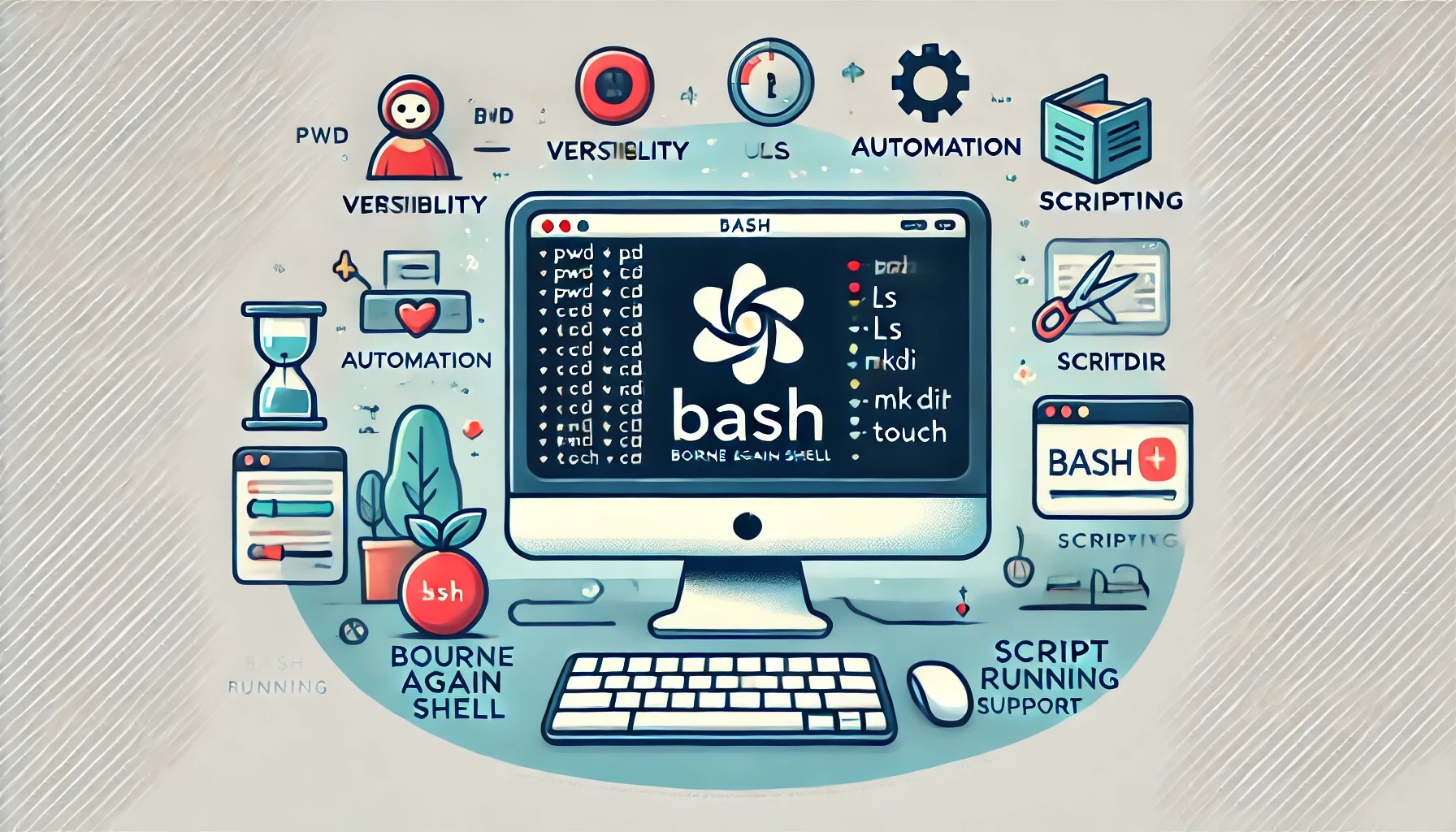
Bash, short for Bourne Again Shell, is a command-line interface used in Unix and Linux systems. It allows users to interact with the operating system by typing commands. Bash is powerful, flexible, and widely used for scripting and automating tasks. In this guide, we’ll dive into the basics of Bash, making it easy for beginners to get started.
What is Bash?
Bash is a Unix shell and command language written by Brian Fox for the GNU Project. It’s an improved version of the original Bourne Shell (sh), offering more features and better performance. Bash is the default shell on most Linux distributions and macOS.
Why Use Bash?
Bash is popular for several reasons:
- Versatility: Bash can perform a wide range of tasks, from simple file manipulation to complex programming.
- Automation: It allows users to automate repetitive tasks, saving time and reducing errors.
- Scriptability: Bash scripts can execute a series of commands, making it easy to manage system operations.
- Community Support: Being widely used, there are countless resources, tutorials, and forums to help you learn and troubleshoot.
It’s here Qiskit and Quantum need to know
Getting Started with Bash
Opening the Terminal
To use Bash, you need to open a terminal. On Linux, you can usually find it in the applications menu under “Utilities” or “System Tools.” On macOS, you can open the Terminal application from the “Utilities” folder.
Basic Bash Commands
Let’s start with some basic commands:
pwd: Print Working Directory – Displays the current directory.
pwdls: List – Shows files and directories in the current directory.
lscd: Change Directory – Navigates to a different directory.
cd /path/to/directorymkdir: Make Directory – Creates a new directory.
mkdir new_directorytouch: Creates an empty file or updates the timestamp of an existing file.
touch newfile.txtNavigating Directories
Understanding how to move around the filesystem is crucial. Use the cd command to change directories:
- Move to your home directory:
cd ~- Move up one directory:
cd ..- Move to a specific directory:
cd /usr/local/binViewing and Editing Files
Bash provides several ways to view and edit files. Here are some common commands:
cat: Concatenate – Displays the contents of a file.
cat filename.txtnano: A simple text editor for creating and editing files.
nano filename.txtviorvim: Powerful text editors with more advanced features.
vi filename.txtBash Scripting Basics
Bash scripts are text files containing a series of commands. They are executed sequentially, allowing you to automate tasks. Here’s how to create a simple Bash script:
- Create a new script file:
nano myscript.sh- Add the following lines:
#!/bin/bash
echo "Hello, World!"The #!/bin/bash line is called a shebang and tells the system to use Bash to execute the script.
- Save and exit (in nano, press
CTRL+X, thenY, thenEnter). - Make the script executable:
chmod +x myscript.sh- Run the script:
./myscript.shUseful Bash Tips
- Tab Completion: Press
Tabwhile typing a command to auto-complete file and directory names. - History: Use the
historycommand to view your command history. Press the up and down arrow keys to navigate through previously used commands. - Aliases: Create shortcuts for frequently used commands by adding aliases to your
.bashrcfile.
alias ll='ls -la'Kotlin if you are developer you need to know
Conclusion
Bash is an essential tool for anyone using Unix or Linux systems. Its versatility and power make it invaluable for both everyday tasks and complex scripting. By mastering the basics outlined in this guide, you’ll be well on your way to becoming proficient in Bash.

